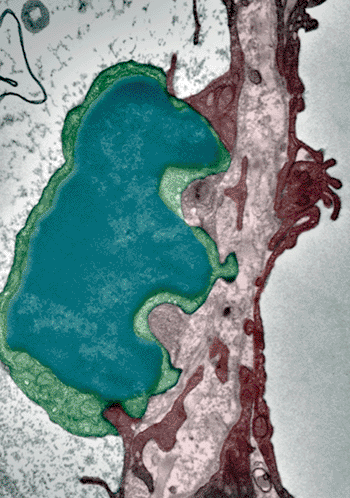Mechanism Discovered for Cancer Cell Metastasis
By LabMedica International staff writers
Posted on 18 Jul 2012
Scientists have for the first time discovered a mechanism by which cancer cells metastasize to other parts of the body, where they form the secondary tumors responsible for the vast majority of cancer-related deaths. Posted on 18 Jul 2012
Until now, molecular level processes leading to the metastatic spread into certain organs have been unknown, it being unclear as to how the secondary cells are able to leave the bloodstream and enter the tissue of other organs. A European team of physiologists and neuropathologists, primarily through the University of Zurich (Switzerland), have now identified a biochemical pathway underlying the origin of metastasis formation whereby at least some, if not all, types of cancer cells metastasize out of the bloodstream. The team, led by principal investigators Dr. Lubor Borsig and Dr. Mathias Heikenwalder, demonstrated that intestinal cancer cells manipulate specific “doorman receptors” on the endothelium of the blood vessels.
Elevated levels of the chemokine CCL2 are known to be characteristic of metastasizing breast, prostate, and intestinal bowel types of cancer cells; clinically, high CCL2 values have been primarily taken as an indication of strong tumor growth and a poor prognosis. Increased CCL2 expression has also been correlated with recruitment of CCR2+Ly6Chi monocytes, CCR2 being a CCL2-activated receptor. Based on in vivo and in vitro experiments, the current study has now shown CCL2 to be far more than an indicator of the cancer’s aggressiveness – CCL2 was found to be part of a signal transduction mechanism critical in helping at least some types of cancer cells metastasize.
The study describes CCL2 upregulation in metastatic UICC stage IV colon carcinomas and demonstrates that tumor cell-derived CCL2 activates the CCR2+ endothelium and thereby leads to increased vascular permeability in vivo. CCR2 acts as a “doorman receptor” activated by CCL2. The role of the CCR2 doorman in a healthy organism is not known and has only now been detected on the endothelium for the first time. Dr. Borsig suspects that the doorman is involved in modulating the permeability of the blood vessels during the body’s immune response.
“The mechanism discovered will yield a completely new approach for the development of drugs to combat metastasis in breast, prostate, and bowel cancer,” Dr. Borsig is convinced. Suppressing the tumor’s chemokine expression or blocking the doorman specifically for the tumor chemokine to inhibit cancer cells from entering healthy tissue from the bloodstream is conceivable. “If we can succeed in preventing the cancer cells from leaving the bloodstream, the metastasis can be fought directly at the source,” concludes Dr. Borsig.
Related Links:
University of Zurich
















